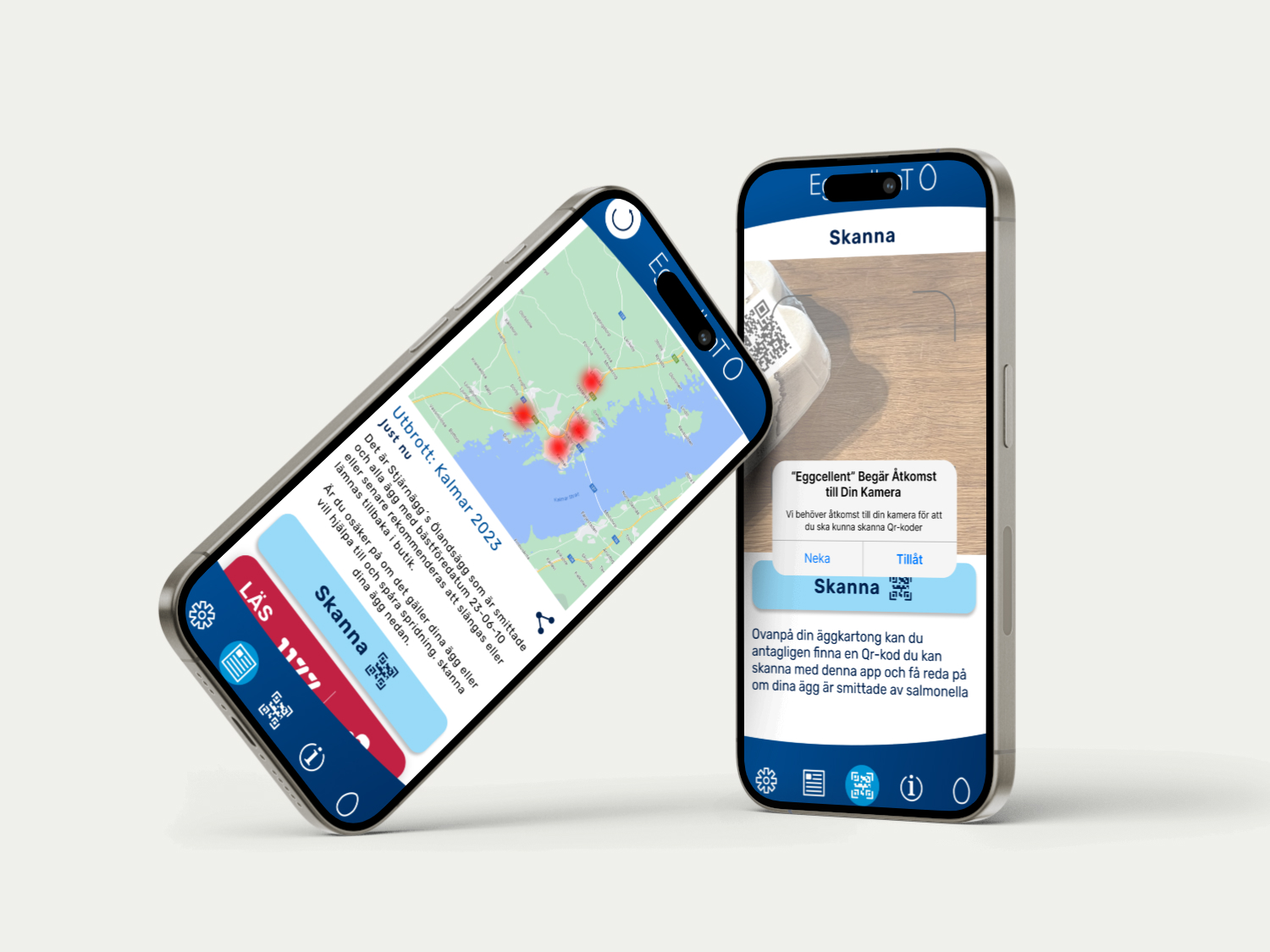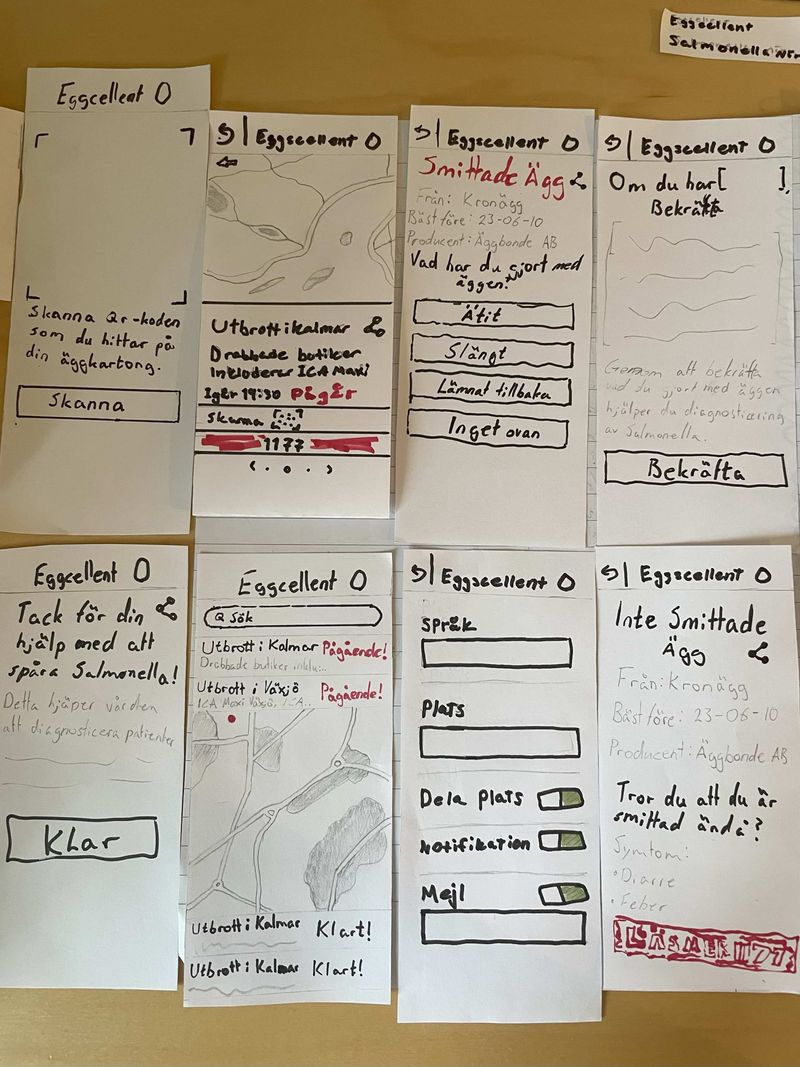Eggcellent
A consumer awareness app

Project Summary
The goal of the project was to create a mobile application aimed at preventing salmonella contamination in eggs by allowing consumers to scan QR codes on egg packaging for real-time information about potential contamination risks.
Problem Statement
Consumers lack a reliable way to verify egg safety and track potential salmonella contamination, leading to health risks and food waste. How might we create a solution that empowers users to make informed decisions about egg consumption?
Solution
A mobile app that enables users to scan QR codes on egg packaging, providing real-time contamination data and safety information. The app features:
- Instant contamination status checks
- Push notifications for recalls
- Educational resources about egg safety
- User-friendly interface for all age groups
My Role
As the lead UX Designer, I was responsible for conducting user interviews, creating concept maps, performing data analysis, and defining typography for the interface. I worked through an iterative design process to ensure the solution met both user needs and technical requirements.
Description
The design process followed a structured, user-centered approach, broken down into the following phases:
Concept Phase
The goal here was to explore and define potential solutions to enhance traceability in egg products. Insights: Through in-depth interviews and data analysis, we gained a clear understanding of user concerns, habits, and expectations regarding food safety and contamination risks. This helped identify key areas where the app could provide value. Intentions: We set specific objectives, including improving consumer awareness of salmonella risks, increasing the traceability of eggs, and ensuring an accessible user experience. Ideas: Brainstorming and sketching allowed us to explore various features, with the QR code scanning mechanism emerging as a key innovation. We also focused on making the app's interface simple and intuitive.
Development Phase
The goal was to define the application's features and interactions based on user needs and business requirements. Insights: We analyzed feedback from the concept phase and applied established UI design principles to shape the user interface. Intentions: Defined technical and design requirements based on earlier insights, ensuring alignment with user needs. Ideas: Developed wireframes, interface designs, and created a paper prototype to test the app's core functionality.
Pain Points
- Limited User Feedback: The scope of user feedback was narrow, which may limit the reliability of the findings and impact future usability.
- Sampling Bias: The small sample size of participants from a convenience sample did not fully represent the broader target audience.
- Prototype Testing Limitations: Limited testing with a small group of users may have overlooked significant usability issues that would only emerge with a broader participant base.
Key Findings
The app successfully integrated QR code scanning as an innovative solution to trace salmonella contamination in egg products. Universal Design Principles ensured accessibility for a diverse audience. Interviews with users, industry stakeholders, and experts enriched the understanding of the problem and helped refine features.
Gallery
Paper Prototype Design
